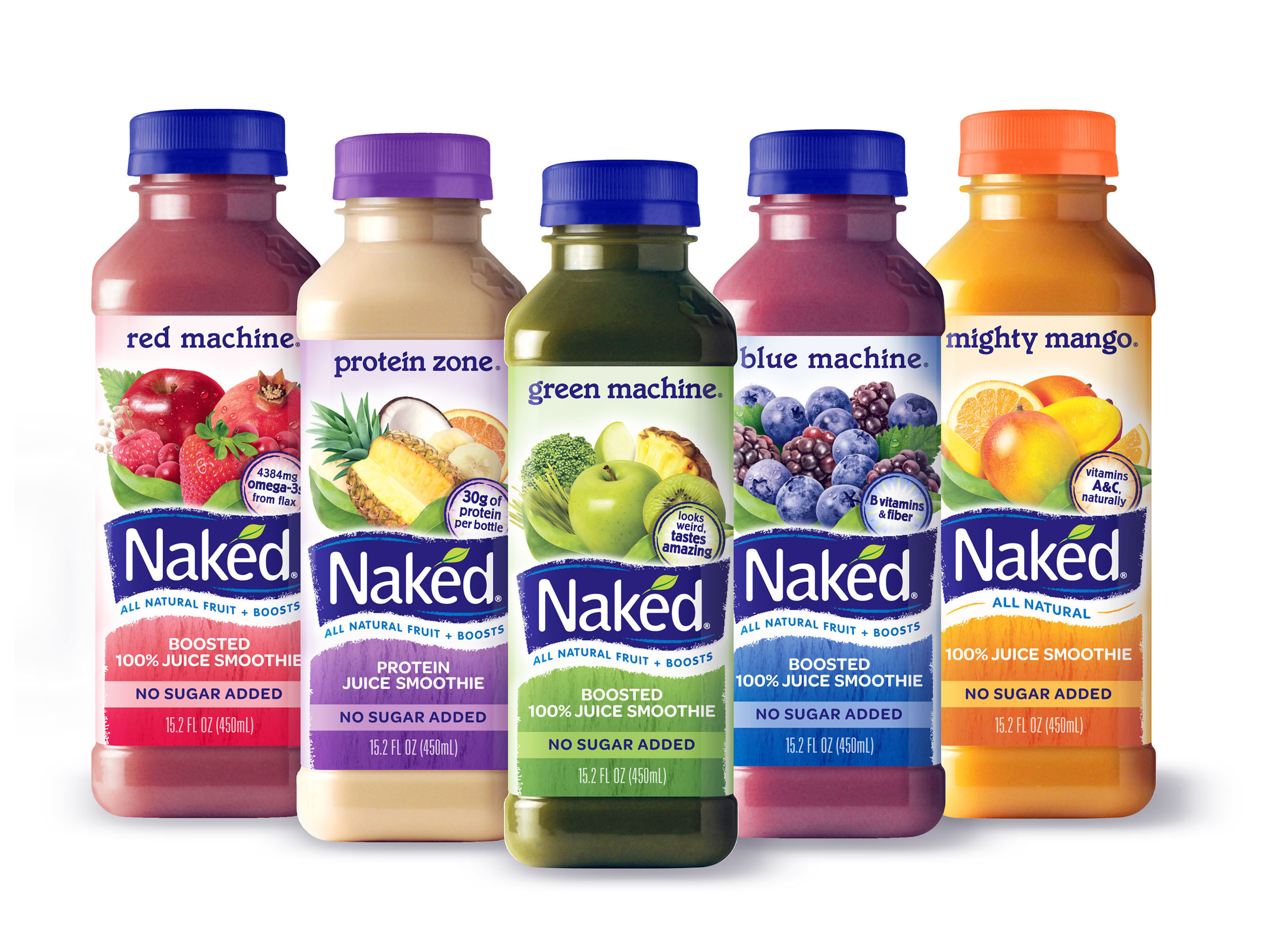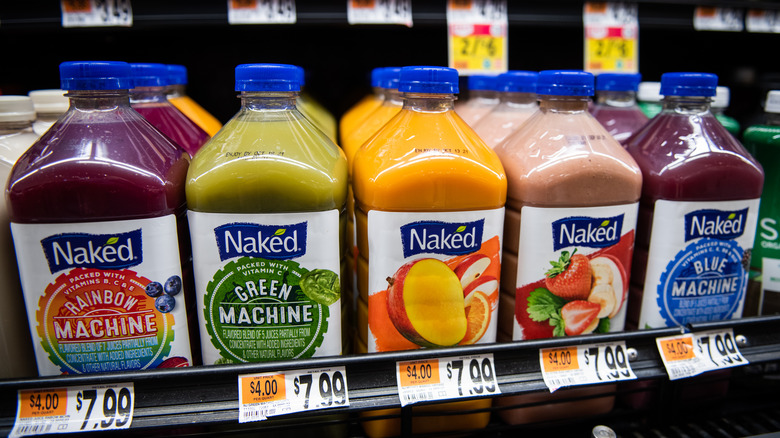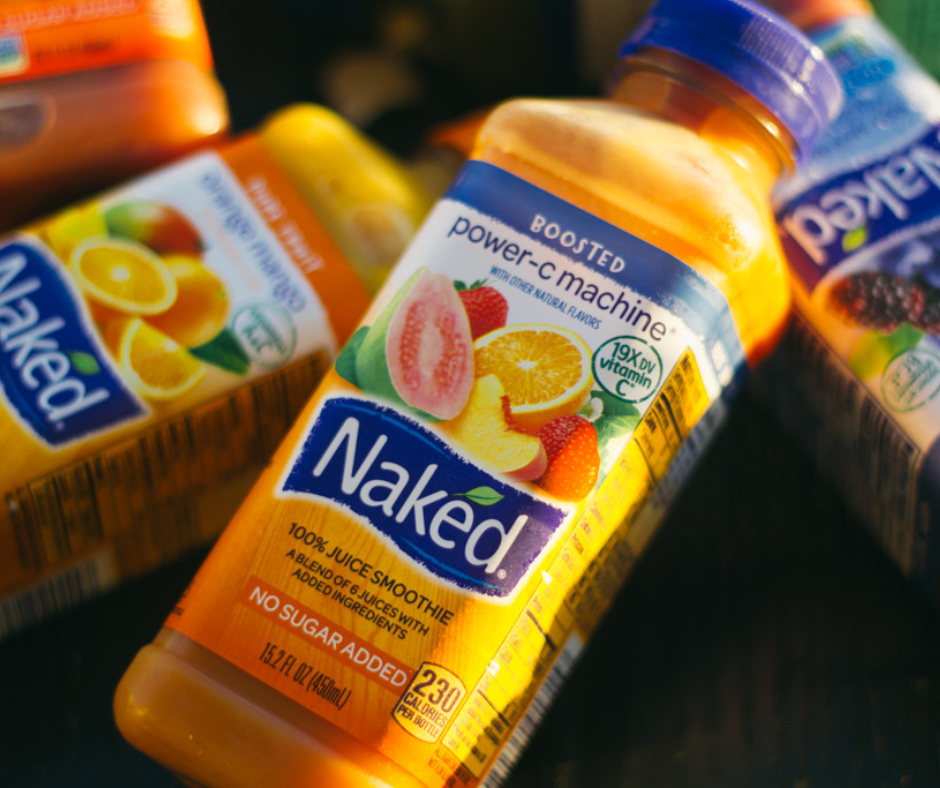Naked Juice offers a range of juice products that, while convenient, may not be as healthy as whole fruits due to their high sugar content and lack of fiber. Understanding the nutritional profile of these beverages is crucial for informed decisions.
With a surge in the popularity of on-the-go health food options, the conversation about the nutritional richness of products like Naked Juice is increasingly pertinent. Fruit juices are often perceived as a healthy alternative to sodas, but it’s essential to read labels and understand what you’re consuming.
Naked Juice can be part of a balanced diet if enjoyed in moderation and with awareness of its sugar content. Choosing these juices requires a close look at your overall dietary needs and a commitment to maintaining a varied and nutrient-rich diet.

Busting The Health Myths Around Naked Juice
Naked Juice often wears a health halo, but let’s unpack the facts. Some believe that these drinks are nutrient-packed powerhouses, equivalent to whole fruits. Yet, fruit in its natural form provides essential fiber often missing in juices. It’s also crucial to scrutinize the sugar content, as some Naked Juice options contain sugar levels akin to sodas.
Many people regard Naked Juice as a quick health fix but overlook the calorie count. Parsing the nutritional labels reveals that calories can be high. Just because a drink is filled with fruit and veggies doesn’t necessarily make it the best choice for a healthy diet. Real health comes from a balance of whole foods with attention to portion sizes.
Naked Juice Ingredients Uncovered
Naked Juice offers a range of fruit and veggie blends. These drinks boast a variety of vitamins and nutrients. Each blend combines fruits like apples, bananas, and oranges with vegetables such as carrots and beets. This creates a tasty mix packed with flavor.
Yet, customers often wonder about additives and supplements in these juices. Some bottles contain added vitamins and minerals to enhance nutritional value. Ingredients like soy lecithin or fibersol-2 act as emulsifiers and fiber supplements. They help blend and preserve the juice. It’s vital to check labels for potential allergens or unwanted additives.
| Ingredient | Type | Purpose |
|---|---|---|
| Soy Lecithin | Additive | Emulsifier |
| Fibersol-2 | Supplement | Fiber Addition |
| Vitamin Boosts | Supplement | Nutritional Value Increase |
Nutritional Breakdown Of Popular Flavors
Naked Juice drinks give your body energy. They can have a lot of calories. A single bottle might have as much as a meal. It’s smart to check the label.
Knowing about sugar levels is very important. Why? Because too much sugar can lead to health issues. Some Naked Juices have sugars like a full soda can. Keep that in mind.
Add more rows as needed
| Flavor | Calories | Sugars |
|---|---|---|
| Green Machine | 270 | 53g |
| Blue Machine | 320 | 55g |
Some juices look healthy but have sugar like treats. Always check the label.

Comparing Naked Juice To Whole Fruits
Naked Juice often lacks fiber, which is found in whole fruits. Whole fruits come with a beneficial mix of vitamins, minerals, and fiber. This blend aids digestion and overall health. Fiber helps you feel full and is key for a healthy gut. Unfortunately, juicing strips away most of this critical nutrient.
| Nutrient | Whole Fruit | Naked Juice |
|---|---|---|
| Fiber | Present | Mostly Absent |
| Vitamins | Retained | Partially Retained |
| Minerals | Retained | Partially Retained |
Vitamins and minerals can decrease during the juicing process. Naked Juice might keep some, but not all, nutrients. Unlike whole fruits, the juice does not have the same amount of vitamins and minerals. Each bottle of juice is not equal to eating fresh fruit. Choose whole fruits for more nutrients.
The Role Of Naked Juice In A Balanced Diet
Understanding the place of Naked Juice in a diet is key. Drink it in small amounts. The juices can be high in sugars and calories. Balancing them with water and whole fruits is essential. Consider the juice as a treat, not a daily need.
Naked Juice should be one part of what you eat and drink. Eat various foods like veggies, grains, and proteins too. Think of juice like a side dish, not the main one. Eating many kinds of food is good for health. It helps your body get all the good stuff it needs.
Expert Opinions And Consumer Reviews
Dietitians often view Naked Juice with skepticism. Slick marketing may suggest these juices are packed with essential nutrients, yet professionals point to high sugar content which can counteract health benefits. Eating whole fruits is always their preferred recommendation, due to the presence of fiber which is lost in juice form.
Customer feedback offers mixed insights. Some enjoy Naked Juice as a convenient fruit serving, especially on-the-go. Critics argue that feeling healthy might be placebo from the colorful packaging and fruit imagery. Reports of a quick energy boost are common, although, for some, this is followed by a sugar crash. It’s clear that body responses to Naked Juice are quite personal.

Frequently Asked Questions For Is Naked Juice Healthy
What Is The Healthiest Juice?
The healthiest juice is one that’s 100% pure, with no added sugars. Vegetable juices, like beet or carrot, and pomegranate juice are top nutrient-rich options. Always opt for fresh-squeezed or cold-pressed varieties.
Which Packaged Juice Is Healthy?
Packaged juices labeled 100% organic with no added sugars are healthiest. Seek options with no preservatives or artificial ingredients for the best choice.
Are Pressed Juices Healthy?
Pressed juices can be healthy, providing vitamins and minerals, but lack fiber and can be high in sugar. Always consider the sugar content and choose whole fruits when possible for full nutritional benefits.
Who Owns Naked Juice?
Naked Juice is owned by PepsiCo, a global food and beverage leader. The acquisition occurred in 2007, expanding PepsiCo’s health-conscious product portfolio.
Conclusion
To sum it up, Naked Juice presents a mixed bag. While offering convenience and vitamins, it’s also dense with sugars. For those prioritizing nutrition, moderation is key, or better yet, opt for whole fruits and vegetables. Always peek at labels to align choices with health goals.
Stay informed, stay healthy!

